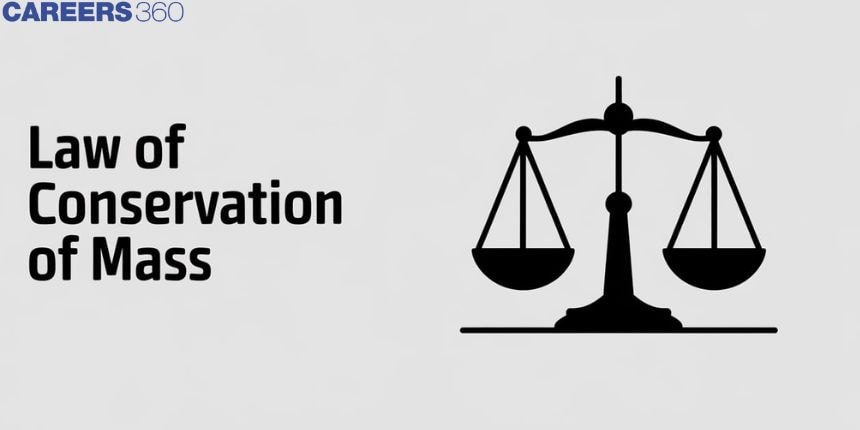Law of Conservation of Mass - Examples, FAQs
The Law of Conservation of Mass is a core objective in physics and states that in any physical or chemical change, the mass of the system remains constant, attribute mass, virginity or cause, within any closed system, such mass can neither be created nor destroyed. This law is essential in the explanation of various phenomena. From the simplest laboratory chemical processes to the most complex geophysical processes such as the hydrological cycle, this law can be appreciated. For example, a simple cooking exercise, where the combined weight of all ingredients is the same as the weight of the cooked dish and the steam coming off it serves as a demonstration of this principle in practice. These concepts and others like them help to explain the universe in physics and chemistry, which is why these concepts established and upheld mass conservation.

Law of Conservation of Mass
The Law of Conservation of Mass states that "mass can neither be created nor be destroyed in a reaction." The total mass shall always be retained from the start of the reaction till the end.
According to this law, matter cannot be created nor destroyed, also known as the law of indestructibility of matter.
|
Related Topics |
Law of Conservation of Mass Formula
The formula for the law of conservation of mass is given by,
$$
\begin{aligned}
& \frac{\delta \rho}{\delta t}+\nabla \cdot(\rho v)=0 \\
& \rho \text { is density } \\
& \mathrm{t}=\text { time }
\end{aligned}
$$
$\nabla$ = divergence
$v=$ flow velocity
Law of Conservation of Mass Examples
- Combustion process: Wood burning is a mass conservation process because it contains oxygen, carbon dioxide, water vapor, and ashes.
- Chemical reactions: To make one molecule of H2O (water) with a molecular weight of 10, hydrogen with a molecular weight of 2 is combined with oxygen with a weight of 8 preserving mass.
Also, check-
Frequently Asked Questions (FAQs)
Atoms are neither generated nor destroyed during a chemical reaction. To generate products, the atoms of the reactants are simply rearranged. As a result, in a chemical reaction, there is no change in mass.
The Big Bang is the ultimate source of energy in our current cosmos. At the beginning of time, all of the energy was created, and as the cosmos expanded, numerous stages of particulate matter were produced from that energy.By the time of the Modern Universe, energy had been dispersed as mass, kinetic energy, chemical energy in lumps of matter, or radiant energy. Galaxies and stars inside them are used to classify the masses. The sun is one of those stars, and it received its energy from the Big Bang.
Because mass is changed into energy or vice versa, nuclear reactions appear to violate both the Laws of Conservation of Mass and Energy.
The law of conservation of mass holds that no mass is generated or lost during a chemical process. The mass of a carbon atom does not change as it transitions from a solid to a gas. The law of conservation of energy, on the other hand, maintains that energy cannot be created or destroyed.